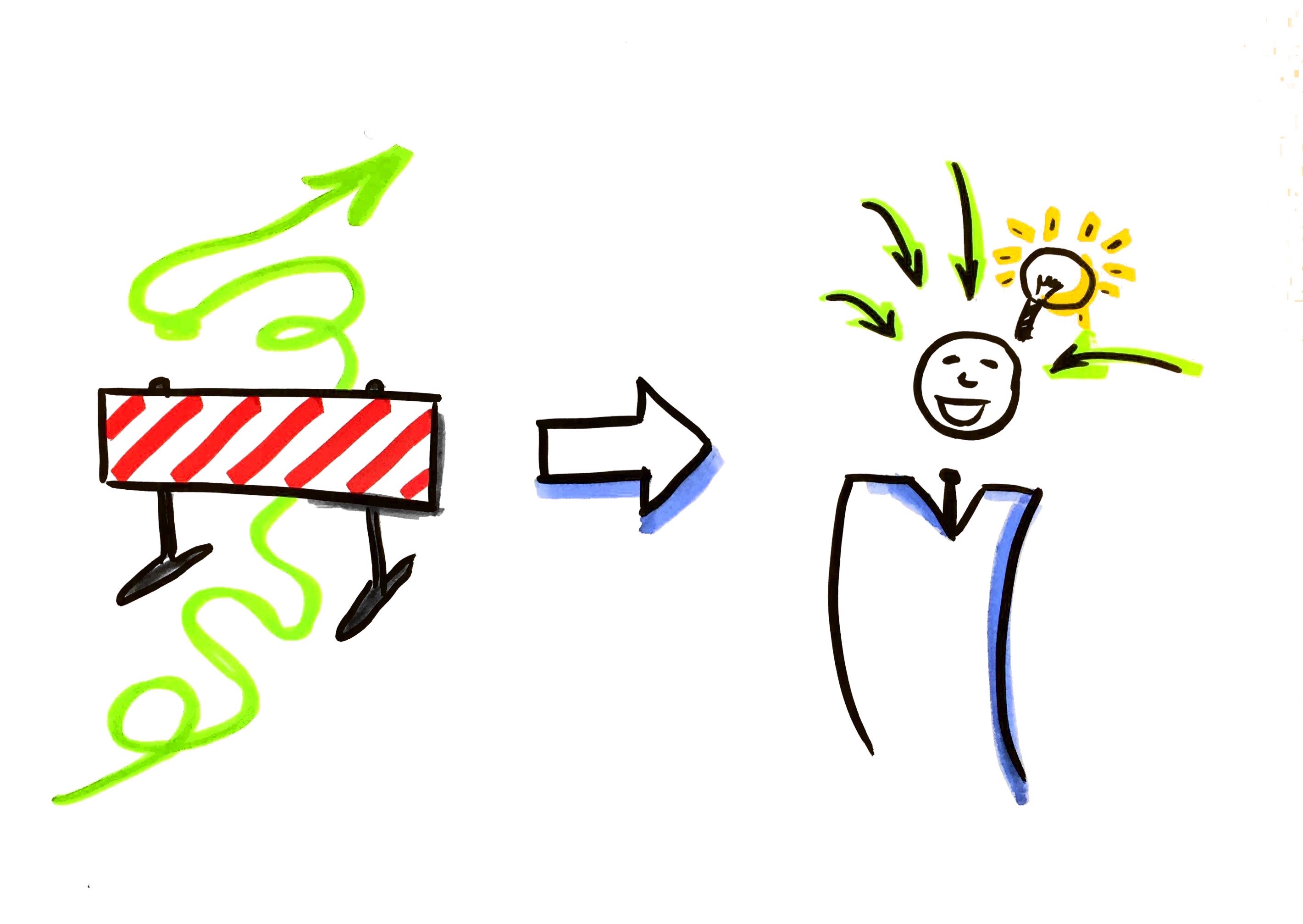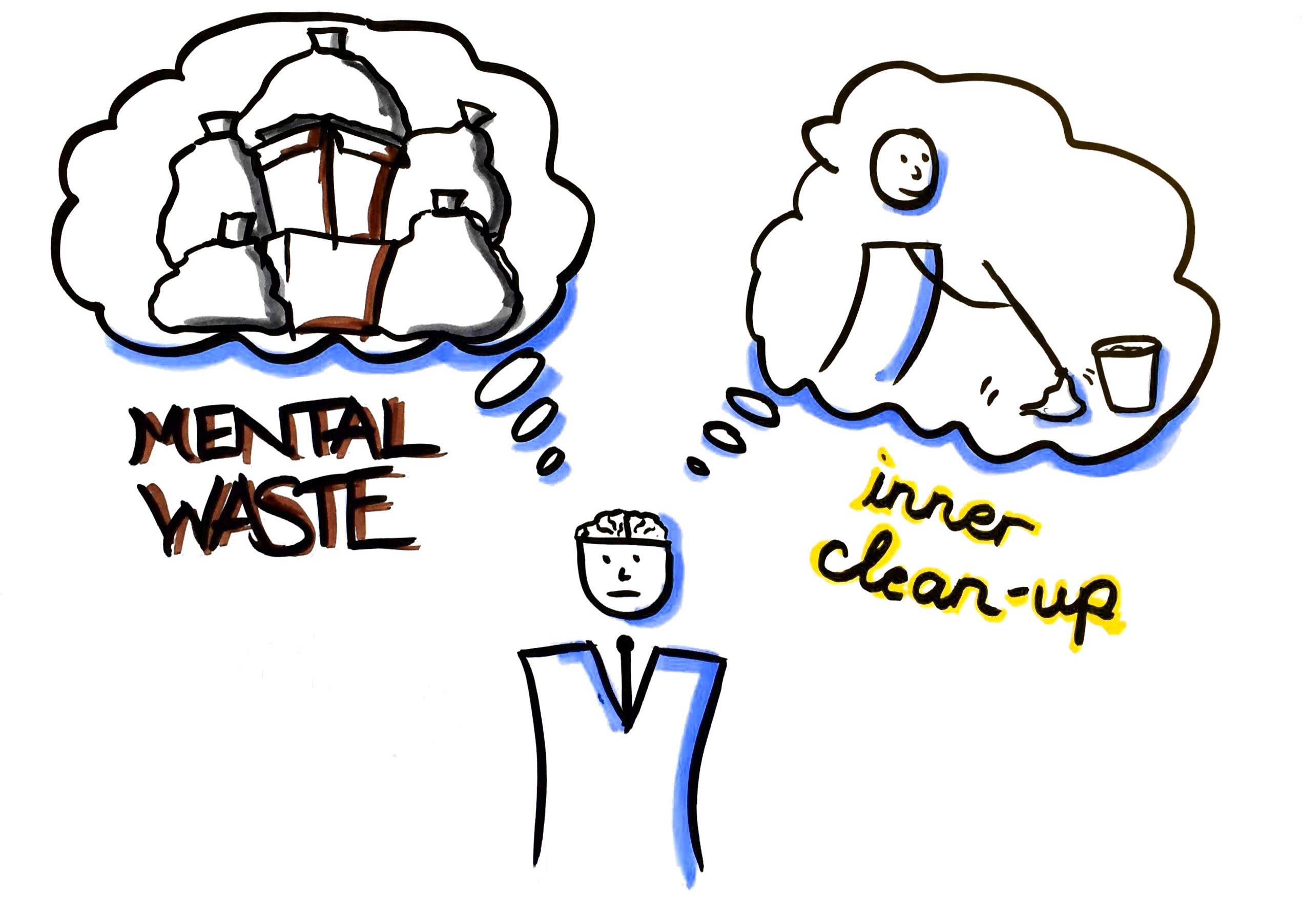How to escape the what-if trap
Do you know situations like this? One of your biggest customers has cancelled a meeting in your calendar without any comment. As this move comes totally unexpected and you don’t have any explanation for it, your mind starts rattling. What has happened? What if you had annoyed him somehow without noticing? Should you call with a pretence and find out? But what if he does not want to talk to you and you make things worse? What if he had switched sources without telling you? What if, what if….You are stuck in a loop of ‘what-ifs’ that keep you busy and distract you from the task you wanted to focus on. You are stuck in thoughts you don’t want to think. You are stuck in ‘mental waste’ you don’t want to produce.
How to get rid of these thoughts? How to change this mental habit? As with any change, we have to go for it in a determined and sincere way. We have to take ourselves seriously. It all starts with a “YES, I want to change my mental habits.” In this case: “I reduce the what-ifs.”
As thoughts are evasive and we are not used to track them, we need to introduce a kind of marker to make our thoughts visible to our inner eye. We need to get aware of them in order to be able to stop them. Hence, we identify so-called ‘heads up – words’
that help us to get aware of the thought pattern we want to reduce. In this case it is easy: It is sentences starting with ‘what-if’ and the following thought loops. It does not make a difference whether we think silently or whether we speak out. The technique with the markers or the heads-up words works in the same way.
At the end of each day, we take 5-10 minutes to write down the what-if-scenarios we were producing during the day. We use either a paper or an electronic journal for monitoring our thought patterns. After taking notes of the what-ifs, we reflect on the context that triggered them in order to find out more about ourselves and about our particular worries or concerns. This leads us to the root-causes of the thought loop.
After 2-3 days, we gain a picture of our thought patterns related to the what-ifs. This is when we enter the next phase intervening into the thought process itself. As soon as the marker comes to our mind, we react with ‘stop’, immediately putting an end to this thought. The ‘stop’-command is combined with a deep conscious breath to interrupt all ongoing processes and reset the mental system. Fully focus on taking the breath. During this mental reboot, you only think of breathing.
To summarize, there are 6 steps to change the what-if mental habit. We call it the ‘marker-technique’:
- Decide clearly for yourself that you want to change. This is the commitment to yourself
- Identify the marker for monitoring the relevant thought pattern. In our case: “What if…”
- Identify the what-if-loops as soon as the thought pattern emerges and become aware of it
- Take 5-10 minutes in the evening to track all what-if-thoughts using a journal (electronic or paper)
- Get to know the context that triggered the what-if-loops to explore the root cause of the loop. Add your insights to your notes
- Say “stop” to the ‘what-if’ as soon as you detect it and take a deep conscious breath
With the marker-technique we eliminate thought patterns that are fruitless and have the power to take energy from us and reduce our efficiency. Stopping negative mental habits can be viewed as an inner detoxification process. Without the mental waste functioning like a blockage, other thoughts come with greater ease and clarity. Some of you will notice that new thoughts emerge you would not have had before. You may get more creative and/or just more focused and resilient.
And what if it doesn’t work? What if it is not as easy as described above? You see, these patterns are pretty deep J. Needless to say that we have to practice this marker-technique for a while until we get rid of our patterns. Persistence and self-discipline are required.
And yes, there is more we can do. To make the mental waste reduction more effective and sustainable, we have to look at emotional aspects as well. The root-cause analysis for the what-ifs can help us to find out more about our worries and concerns underlying the ‘what-ifs’. But first things first: Let’s tackle the ‘mental waste’ and create space for something new J
In one of the next posts I will talk about emotional patterns….




